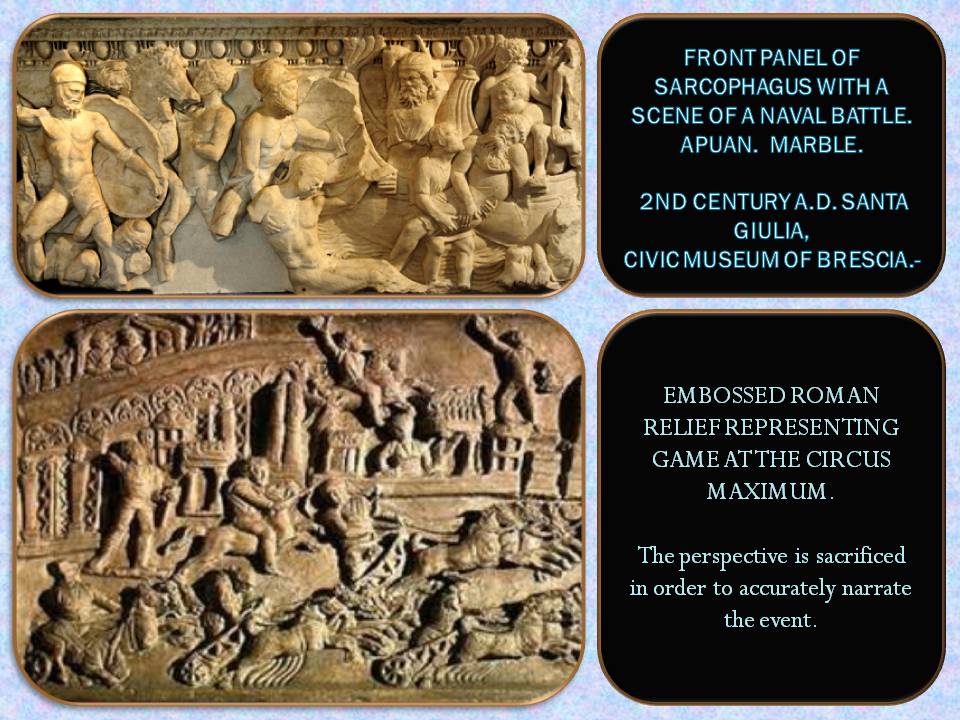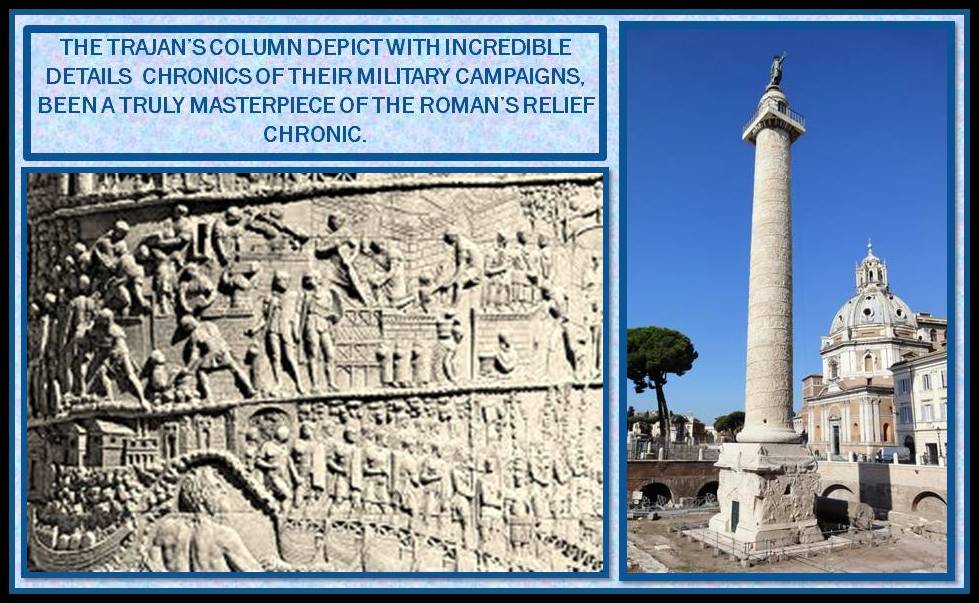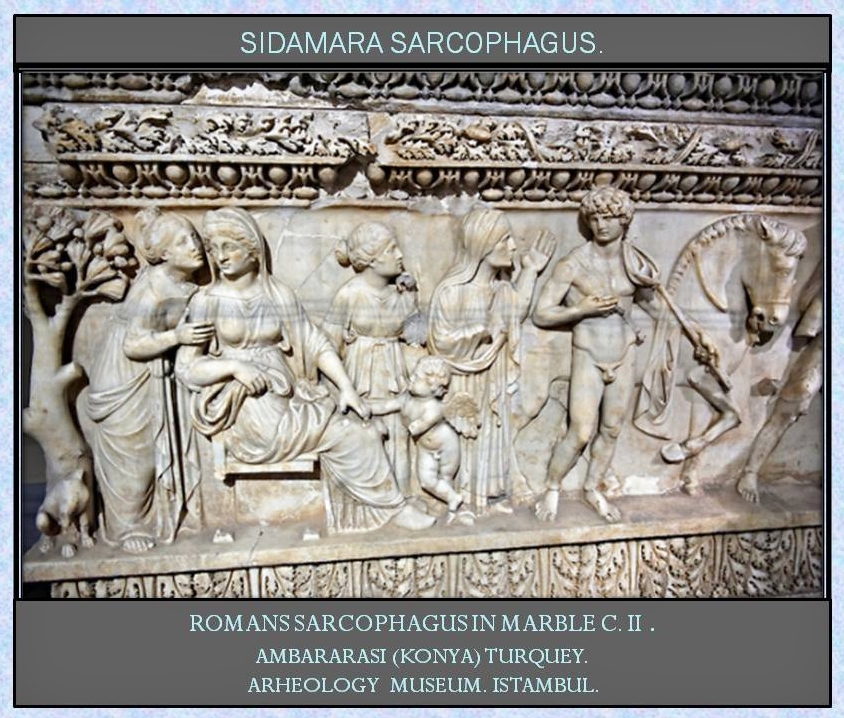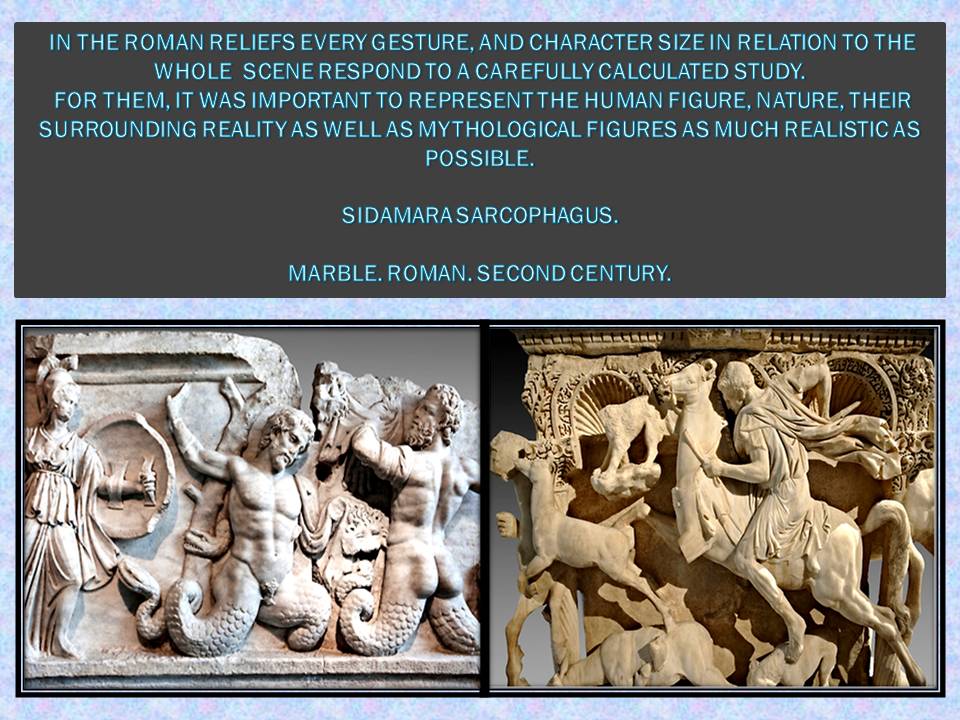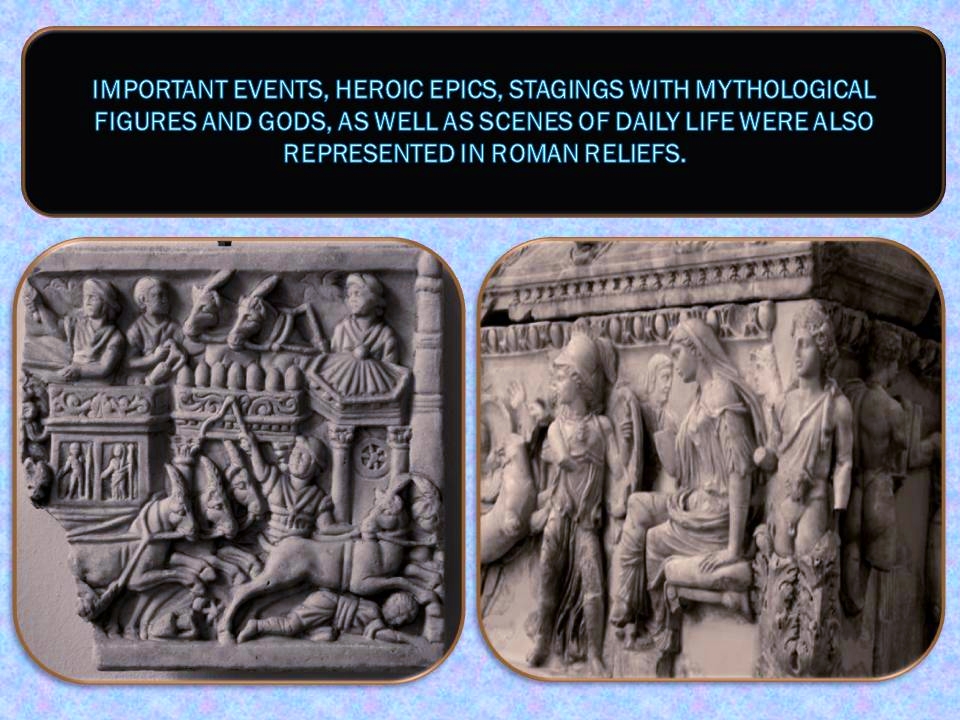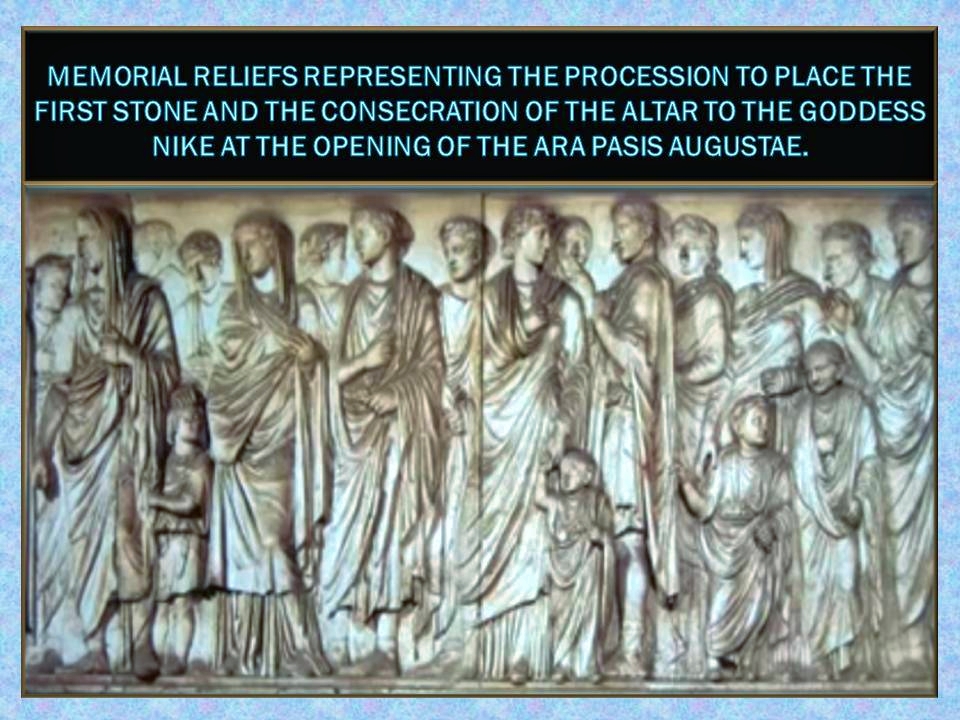Roman’s reliefs sculpture.
Chronicle and narrative style tendency in Roman’s reliefs.
Rome became the center of great empire who bind different cultures under its military power and cultural influence, so in consequence also applied the relief technique in their conquered territories in the same way that anonymous craftsmen did in Rome to decorate architectural monuments, commemorative columns and funerary pantheons walls as well as sarcophagus and the famous Arches of triumph . They are like Roman historical accounts made in stone, containing significant information on many aspects relating to the social, religious, political, military, cultural and economic life of this city and the regions they conquered.
Can be said that “Relief Sculptures” are a creation resulted from the combination of two-dimensional pictographic arts and the three-dimensional sculptural arts. Accordingly a relief, dependent of a background surface and is extended with the combination of protuberances and deep carving in order to be visible.
A relief also has a degree of real three-dimensionality, just like a proper sculpture. Roman artisans’ made a very good use of this technique when chronics and honoring representations were needed.
Although mainly Roman’s chronic reliefs were carried out in order to decorate the walls of monuments and sarcophaguses, they meticulously captured as well important historical and commemorative dealings in Roman’s daily lives.
Through stories narrated with vivid realism and detail, important figures of the government and their families are portrayed in scenes that are sore of visual rendering in stone or marble of them as well as other ordinary citizenso who are held at a certain moment of the action or event that was perpetuated.
Some of the relief decoration technique advantages over the sculptures are:
– A relief sculpture can represent a far wider range of subjects than a statue because of its economy of resources allowing a better understanding of the messages.
– Because is attached to its background surface, problems of weight and physical balance are not a concern – unlike in statues and other freestanding sculptures where weight and balance can be critical.
– Also because reliefs are carved directly onto walls, portals, ceilings, columns, floors and other flat surfaces, they are ideally appropriate to architectural projects decorations.
The Roman sculpture during the first century of our era takes place away from the idealism and produced a series of important plastic works on a large scale, such as the arches of Titus and Trajan, columns of Trajan and Marcus Aurelius; whose relief are very well know for been true realistic masterpieces.
Key elements in the chronic relief in Roman sculpture:
-Care in the representation of natural fall of the folds can be seen.
-Serene expressions of faces and attitude of the portrayed.
-Gestures and postures strengthen communication with the viewer depending on the scene and purpose they want to achieve.
-Legs and arms as well as the direction of the head support the representation of the dynamics of the scene for example: those who are advancing in the procession, speaking or reaching something.
-They provide visual aspects of their clothing, rituals, social status, gods they revere, mythological heroes, musical instruments and other elements.
-These reliefs added the didactic and narrative function to the decorative.
– They also were made for practical use of decoration, tribute, memorial, banality or personal ambition.
-They are anonymous, made by different sculptors of stone and marble whose craftsmanship is commissioned by the customer for what guidelines and specific requirements were followed.
-The ductility of the stone allowed these artists to print in stone important moments in history that have been left for posterity thanks to its durability.
-They use the perspective in reliefs with the intention of depth.
The admiration of the Roman upper classes towards the Hellenistic art and the fact that many Greek sculptors were working in Rome supported the influence of the Greek plastic in the Italian Peninsula. This one was considered a model of beauty and copies of Hellenistic pieces proliferated thanks to what was possible to see the work of classical artists in Rome and be also appreciating for posterity.
Those reliefs show interest in represent important events, heroic epics, staging with mythological figures and gods and were perfect related with the pride of the Romans as a nation, its power and the need to use any means possible to actually perform the work of propaganda that supported the actions of conquest, domination and subjugation of numerous nations and cultures.
Therefore every detail of the scenes has been planned with a thorough preliminary dissertation; nothing is left to chance; resulting in a very natural and realistic work even so nothing has been improvised. Every gesture, character and size of the scene in relation to the whole responds to a carefully calculated project.
For Roman’s, was important to represent realism in their works of art because for them the sculptor missions is not only represent beauty and pleasant features, but also represent nature and reality as good as the stone work carvings technique made it possible. Against the classical Greek abstraction preference for perfect characters, the Romans favorite to represents real-life people, portraying them with their personal characteristics, even if they were not precisely good looking.
Conclusion
Reliefs were done not only to communicate a message to society through an excellent propaganda, but also to honor their gods. They were as well consequently a vehicle of communication between divinities and worshipers. Have divinities made in stone ensured that those religious offerings would last eternally, with the height quality of what in their eyes these divinities deserved. The same desire of everlasting respects and honoring to their love one applies at the sarcophagus decorations.
Through these “relief- chronic” in Rome they obtein the main purpose of communication, handling carefully each of the artistic elements that need to be represented, even thoug they are subordinated to the principles of the narrative in plastic media did not failed in their task to represent the personal imprint of the nation and propagandistic purposes of the Empire as well.


